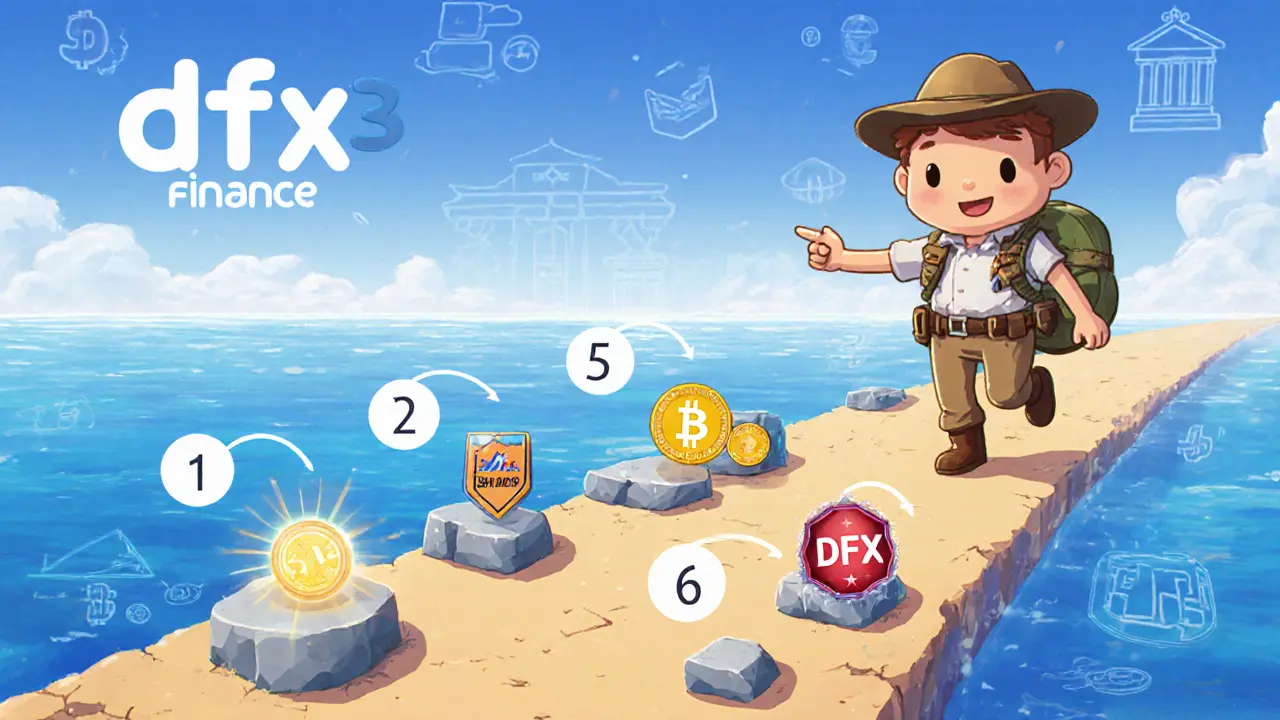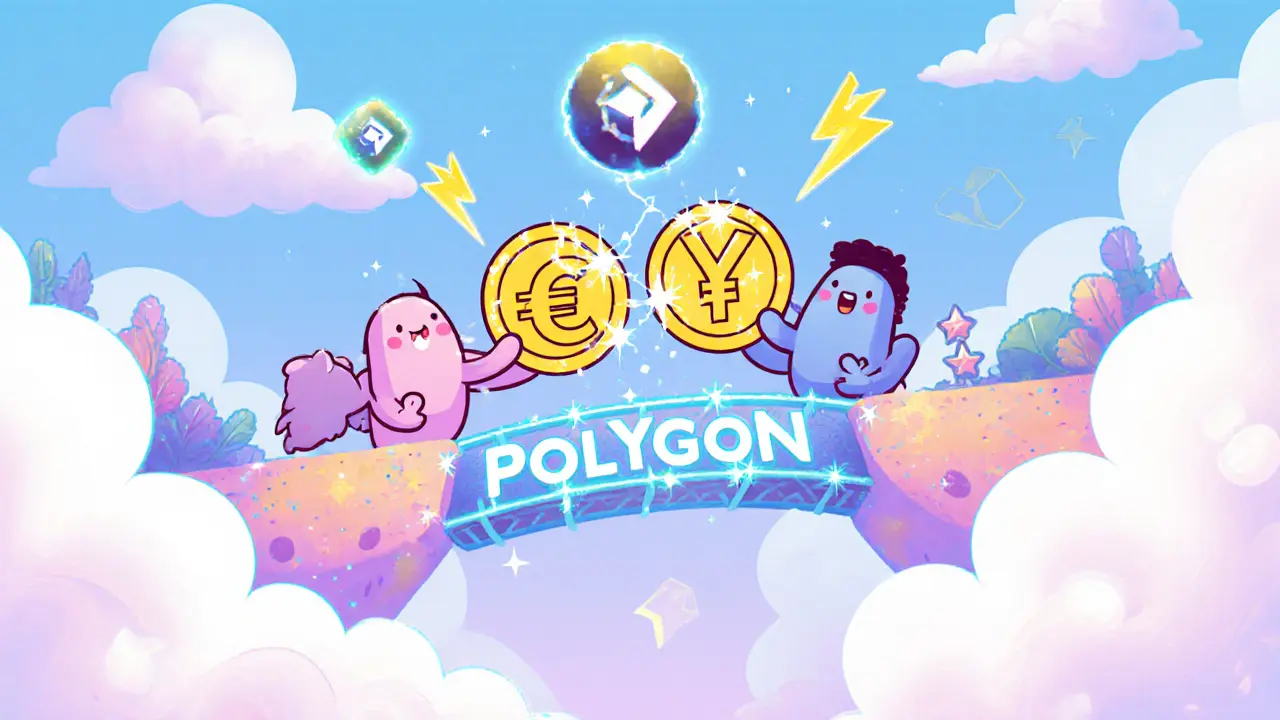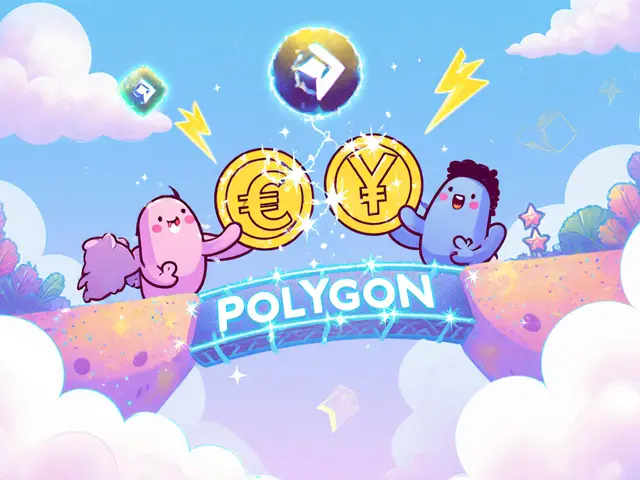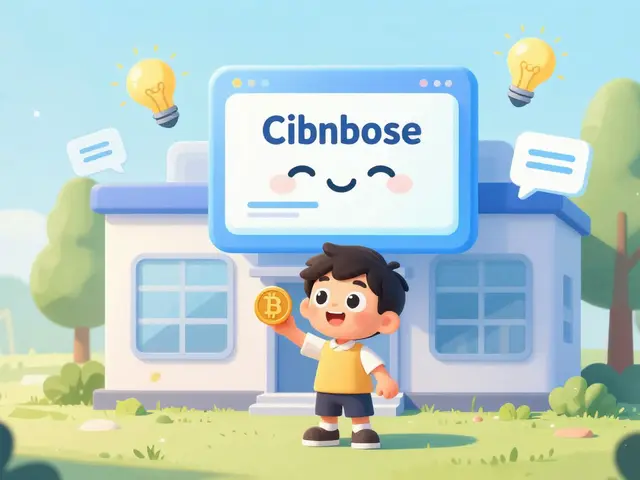DFX Stablecoin Swap Cost Calculator
Calculate Your Swap Cost
Swap Details
Why DFX? Compared to Uniswap/SushiSwap where stablecoin swaps typically have 0.3% fees + gas, your savings could be significant.
When it comes to niche crypto exchanges, DFX Finance is a decentralized foreign‑exchange protocol built on the Polygon network that lets you swap fiat‑backed stablecoins with minimal slippage. If you’ve ever felt the sting of volatile crypto pairs when trying to move money across borders, DFX promises a calmer route. Below is a full‑blown look at how it works, where it shines, and what you should watch out for before plugging your wallet in.
What makes DFX Finance different?
DFX Finance isn’t trying to be the next Uniswap. Its whole premise is the exchange of stablecoins that are tied to real‑world currencies - euros, pounds, yen, you name it - without the usual USD‑centric bias you see on most DeFi platforms. By focusing solely on fiat‑backed assets, the protocol can fine‑tune its Automated Market Maker (AMM) for low‑volatility trading, meaning you get tighter pricing and almost no slippage on even modest swaps.
The platform lives on Polygon, a Layer 2 scaling solution for Ethereum that offers cheap, fast confirmations. That combination - a purpose‑built AMM running on a cheap chain - is the core of DFX’s value proposition.
How the AMM works for low‑volatility assets
Most AMMs, like the ones powering Uniswap, assume price swings can be dramatic. Their pricing formulas (the classic constant‑product curve) are great for Bitcoin‑ETH pairs but introduce unnecessary spreads when you trade a euro‑stablecoin for a yen‑stablecoin.
DFX’s proprietary algorithm tweaks the curve to reflect the near‑flat nature of stablecoin prices. The result? A tighter bid‑ask spread, lower impermanent loss for liquidity providers, and a smoother experience for traders who simply want to move dollars from one fiat peg to another.
Tokenomics - the DFX token and MATIC fees
The native governance token, DFX token, sits at roughly $0.0077 as of October 2025, with a circulating supply of about 43.6 million out of a 100 million cap. Holders can vote on fee structures, new stablecoin listings, and protocol upgrades.
Because the protocol runs on Polygon, you’ll need a small amount of MATIC to cover transaction fees. The average gas cost for a DFX swap is usually under $0.001, which is a fraction of what you’d pay on Ethereum’s mainnet.

Comparing DFX Finance to mainstream DEXs
| Feature | DFX Finance | Uniswap | SushiSwap |
|---|---|---|---|
| Primary focus | Fiat‑backed stablecoins | All crypto pairs | All crypto pairs |
| Chain | Polygon (Layer 2) | Ethereum L1 & Layer 2s | Ethereum L1 & Layer 2s |
| Typical fee | ~0.05 % spread, negligible gas | 0.30 % + gas | 0.30 % + gas |
| Slippage on stablecoins | Very low (optimised AMM) | Higher, generic AMM | Higher, generic AMM |
| Token incentives | DFX governance token | UNI governance token | SUSHI governance token |
In short, if you are only swapping euro‑stablecoin for yen‑stablecoin, DFX gives you a tighter price and cheaper gas. If you need to trade NFTs or volatile tokens, Uniswap or SushiSwap still have the broader market.
Pros and cons checklist
- Pros
- Specialised AMM reduces slippage on stablecoins
- Polygon’s low fees make micro‑trades viable
- Governance token lets community shape the roadmap
- Focus on non‑USD stablecoins fills a market gap
- Cons
- Very limited trading pairs - essentially a stablecoin hub
- Low daily volume (around $1.8 K) means limited liquidity for large swaps
- Not listed on major centralized exchanges, so retail onboarding is harder
- Community activity appears sparse; support channels are thin
Step‑by‑step: How to start using DFX Finance
- Set up a Web3‑compatible wallet (MetaMask, Trust Wallet, etc.).
- Load a small amount of MATIC to cover Polygon gas.
- Visit the DFX Finance web‑app and connect your wallet.
- Select the fiat‑backed stablecoins you want to exchange (e.g., EUR‑USDC → GBP‑USDC).
- Confirm the swap; you’ll see the exact rate and the tiny spread before you sign.
- If you hold DFX token, consider staking it for voting rights or fee rebates.
The whole process should take under two minutes once your wallet is funded.

Future outlook - will DFX survive the hype?
There are three forces that could push DFX forward:
- Growing demand for non‑USD stablecoins as more countries launch their own digital currencies.
- Institutional interest in low‑cost, cross‑border settlement on a trustless layer.
- Continued improvements to Polygon’s throughput, keeping fees near zero.
On the flip side, the protocol’s narrow market means it must win over either big banks or a sizable retail niche to stay relevant. If central‑bank digital currencies (CBDCs) become mainstream, DFX could either serve as a bridge or be bypassed entirely by official channels.
For now, the platform remains a modest player with a small but dedicated user base. Keep an eye on partnership announcements - a link with a major fiat gateway could be the catalyst that brings liquidity back to the order books.
Bottom line
If you need a cheap way to move euros, pounds, or yen on‑chain without exposing yourself to crypto volatility, DFX Finance offers a purpose‑built solution. It won’t replace Uniswap for trading tokens, but for the specific stablecoin‑swap niche it’s hard to beat. Just remember the low volume and limited community support before committing large sums.
Frequently Asked Questions
What blockchains does DFX Finance run on?
DFX Finance is built exclusively on the Polygon network, which is a Layer 2 solution for Ethereum offering low fees and fast finality.
Can I trade non‑USD stablecoins on DFX?
Yes. The platform supports a range of fiat‑backed stablecoins, including EUR‑USDC, GBP‑USDC, JPY‑USDC and others, allowing direct cross‑currency swaps.
Do I need to hold DFX tokens to trade?
No. Trading can be done with any wallet balance of the supported stablecoins. Holding DFX tokens only gives you governance rights and potential fee rebates.
How much does a swap cost?
The protocol itself charges a tiny spread (around 0.05 %). Polygon gas for a swap is usually under $0.001, so total cost is effectively negligible for most users.
Is DFX Finance safe?
The code is open source and has been audited, but low liquidity means large trades can impact prices more than on bigger DEXs. As always, only trade amounts you’re comfortable risking.







Marina Campenni
October 18, 2025 AT 08:11I found the overview of DFX Finance helpful, especially the focus on non‑USD stablecoins. It’s clear the team wants to address a real pain point for cross‑border traders who dread slippage. The use of Polygon really does keep fees low, which is a boon for micro‑transactions. I also appreciate the note about the governance token giving the community a voice. Overall, the write‑up presents the platform in a balanced way without hype.
Irish Mae Lariosa
October 23, 2025 AT 13:11While the article does a decent job of laying out the basics, it glosses over several critical shortcomings that deserve more scrutiny. First, the daily volume of roughly $1.8 K is shockingly low, meaning any sizeable swap will immediately move the market and erode the promised low slippage. Second, the tokenomics section barely addresses the token’s near‑zero price, raising questions about actual utility versus token‑pump potential. Third, the reliance on a single L2 – Polygon – introduces a centralisation risk should the network experience congestion or a fee hike. Moreover, the governance model, though theoretically inclusive, suffers from a sparse community, limiting meaningful participation. Finally, the article fails to mention any concrete roadmap or partnership milestones that could catalyse liquidity growth. In short, the piece is optimistic but omits the stark reality of limited depth and uncertain future.
Nick O'Connor
October 28, 2025 AT 17:11The architecture of DFX is interesting; it leverages Polygon’s low‑cost environment,; however, the AMM tweak for stablecoins,; while novel,; may not be enough to attract large liquidity providers,; especially given the platform’s current volume constraints.
Shivani Chauhan
November 2, 2025 AT 22:11Nice breakdown! I think the mix of formal terminology with informal readability makes the guide easy to digest. The step‑by‑step section is spot on – even newcomers can follow the wallet setup without a hitch. One thing that could be added is a quick note on how to verify the contract address to avoid phishing scams. Also, the comparison table really helps visualize where DFX stands against Uniswap and SushiSwap. All in all, a solid piece that balances detail with clarity.
Deborah de Beurs
November 8, 2025 AT 03:11Alright, let’s cut through the fluff – DFX is a gimmick wrapped in a glossy UI. Sure, the gas is cheap, but the platform’s volume is laughably low, meaning your “near‑zero” slippage is a mirage. They throw around buzzwords like “governance token” and “community‑driven” without showing any real stake‑holder engagement. If you’re looking for a serious avenue to move euros or pounds, you might as well stick with a traditional fiat gateway. The article should have highlighted these red flags earlier instead of dressing them up as “niche potential.”
Sara Stewart
November 13, 2025 AT 08:11Got to say, the platform’s niche focus is actually a solid use‑case for DeFi‑savvy traders. By zeroing in on fiat‑backed stablecoins, DFX sidesteps the volatility that usually scares institutions away. The low‑fee structure on Polygon is a real boon for high‑frequency micro‑trades, which is where the magic happens in liquidity provision. Plus, the DFX token adds a layer of governance that can align incentives if the community gets active. In short, it’s a promising piece of the puzzle, even if the current liquidity is modest.
Laura Hoch
November 18, 2025 AT 13:11Reading through the analysis, I’m reminded of the philosophical tension between decentralisation ideals and practical market depth. DFX aims to democratise cross‑border stablecoin swaps, yet its shallow order books betray a disconnect between vision and execution. From a pragmatic standpoint, the platform could serve as a testing ground for institutional pilots, especially if they partner with existing fiat on‑ramps. However, without a robust community to seed liquidity, the promise remains largely theoretical. It’s a classic case of ambition outpacing infrastructure.
Devi Jaga
November 23, 2025 AT 18:11Oh great, another “specialised” DEX that thinks it can out‑play the big players by limiting itself to stablecoins. Yep, that’s exactly what the market needs – more fragmentation. With a daily volume that can barely cover a coffee, DFX is basically a hobby project that will probably fizzle out unless a bank decides to throw cash at it. But hey, maybe the novelty of swapping euros for yen will keep it alive for a few weeks. I’m skeptical, but at least it adds some entertainment to the otherwise dull DeFi landscape.
Deepak Kumar
November 28, 2025 AT 23:11Don’t let the low volume discourage you – it’s an opportunity to be an early contributor! By providing liquidity now, you can earn higher rewards and help shape the platform’s trajectory. The governance token, DFX, empowers you to vote on fee structures and new pair listings, which means you have a direct impact. Pairing with Polygon ensures transaction costs stay negligible, allowing you to experiment with micro‑trades without eroding returns. If you’re curious about cross‑border stablecoin swaps, jumping in early could pay off as the ecosystem matures.
Matthew Theuma
December 4, 2025 AT 04:11Sounds chill, but I’m still wondering how “low‑fee” actually feels in real‑world use… 😎 Also, the vibe of the UI is pretty sleek – kind of like a modern coffee shop app. Might be a typo here but the idea is clear: it’s cheap, fast, and simple. If you’re into that laid‑back DeFi vibe, DFX could be a nice side‑project.
Carolyn Pritchett
December 9, 2025 AT 09:11This whole “niche stablecoin hub” thing is a laugh. The platform looks half‑baked, the community is ghost town‑level, and the token price is practically zero. If anyone thinks DFX is going to shake up the market, they’re dreaming. It’s just another token‑driven gimmick that will probably disappear once the hype dies down.
Jason Zila
December 14, 2025 AT 14:11The article correctly points out that DFX’s success hinges on broader adoption of non‑USD stablecoins. As more countries launch digital currencies, the demand for a specialized AMM could rise. However, the platform must first overcome its liquidity deficit to become a viable bridge. Strategic partnerships with fiat gateways would be a logical next step. Until then, its utility remains limited to small‑scale traders.